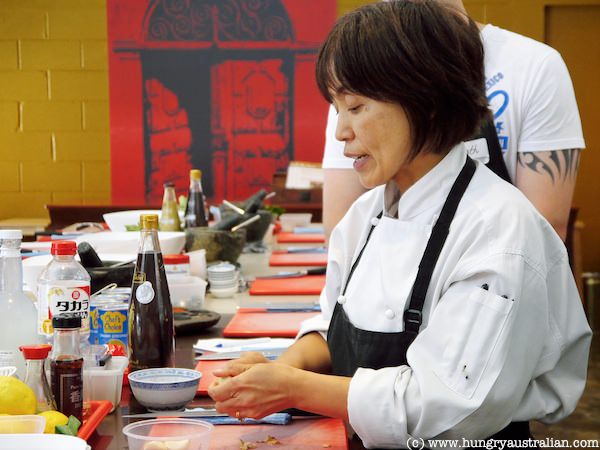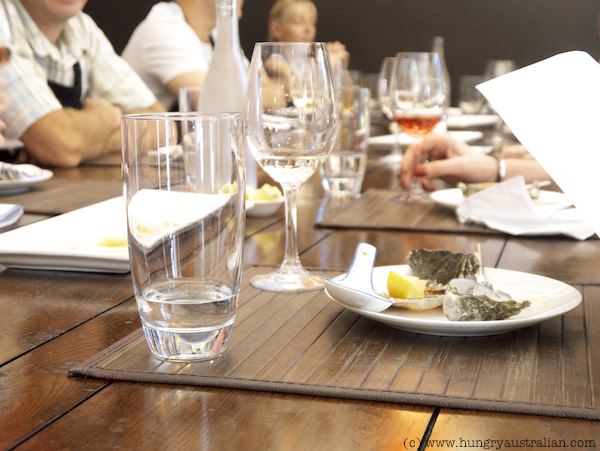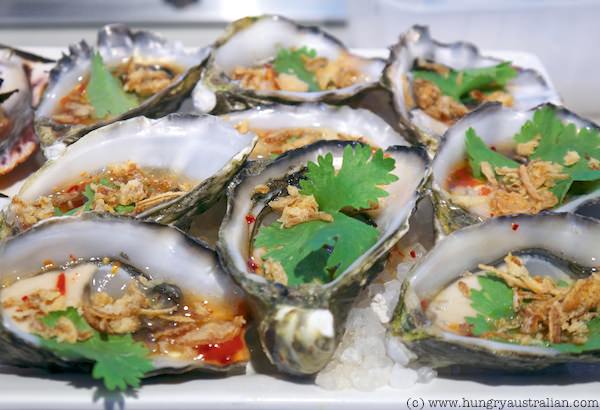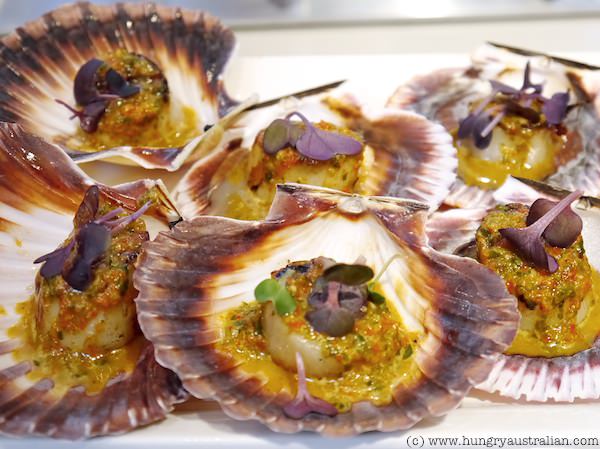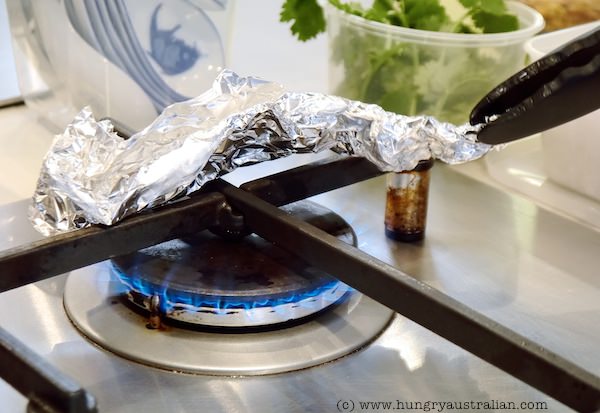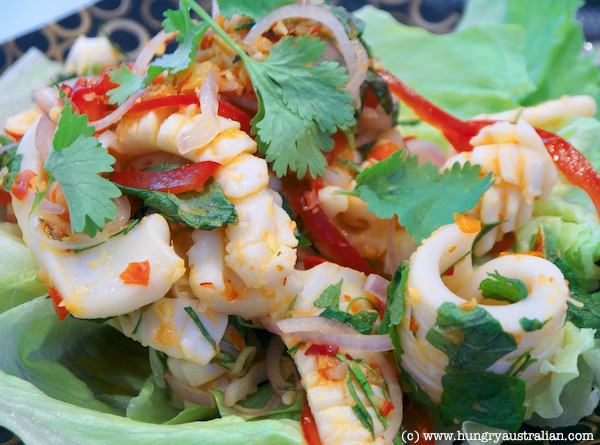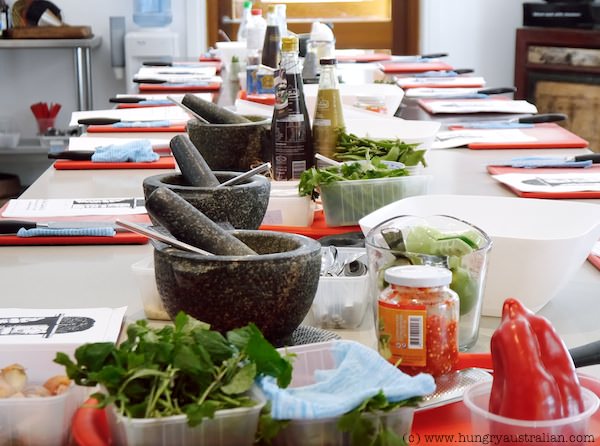
I love watching people cook.
People always do things differently to me, in ways I had never considered. So I always learn about something new – a new ingredient, a new technique, a new cooking style – and it sends me straight back to my kitchen feeling inspired and energised.
So I was delighted to take part in the Thai Seafood Banquet class at Sticky Rice Cooking School a couple of weekends ago.
Sticky Rice Cooking School is run by Claire Fuller, who decided there was a place for a cooking school that offered more than a celebrity chef demonstration without the formality of a professional cooking course. Her school offers people a chance to really get their hands dirty, to learn about the culture as well as the food, to leave knowing where to buy the ingredients used (and which brands are recommended) and exactly how to cook the featured dishes at home.
Chefs at the school include David Thompson (ex Darley Street Thai, author), Katrina Ryan (ex Rockpool), Kurma Dasa (Australia’s vegetarian guru, author), Kelly Lord (Spirit House), Genevieve Harris (ex Nediz), Ali Seedsman (ex Magill Estate and Universal Wine Bar), Jordon Theodoros (Aquacaf), Brian Smith and Allie Reynolds.
Classes are typically four hours long and usually showcase a type of cuisine – Asian or Middle Eastern – or a particular country’s cuisine. So classes are offered in Thai, Vietnamese, Nepalese, Laos, Cambodian, Malaysian, Japanese, Indonesian Indian, Moroccan and Lebanese food.
I’d chosen the Thai Seafood Banquet class as I was keen to learn more about Thai ingredients and cooking techniques. I adore Thai food – we actually honeymooned in Koh Samui – and I cook Thai seafood salads and curries (usually from pastes) at home a lot during Summer. So I was curious to see if my take on Thai food was close to authentic.
The class was taught by Chef Yukiko Anschutz (ex Shiki at The Hyatt), who was encouraging and informative. At the beginning of each session she took us step by step through the recipe, explaining how the individual ingredients should be prepared. Here she is below teaching us one of her useful tips – use a teaspoon to peel ginger rather than a knife or peeler as they remove too much of the ginger with the skin.
Our class of 18 comprised seven men and eleven women. Some had come to the class by themselves, while others had come with a partner or friend, or in a group of friends or family members. Many had been given a gift voucher to the class by a friend, family member or colleague as a gift.


After we’d prepared the first two dishes – the scallops and the oysters – we were invited to sit down in the dining room and enjoy the fruits of our labours.
The first dish was Freshly Shucked Oysters with Chilli Lime Juice. They were simple and stunning, the brininess of the oysters perfectly set off by salty, sour and chilli flavours. Although they weren’t listed in the recipe, Chef Yukiko sprinkled fried shallots (found in plastic jars at Asian grocers) over the oysters, which created an intense onion flavour and textural contrast.
Next up were Seared Scallops with Chilli Ginger Vinaigrette. The dressing was made with roasted chilli, ginger, garlic, coriander leaves, lime juice, palm sugar, coconut vinegar, sesame oil, mirin and spring onions. It was superb and I will definitely make this dish again. The complex, full-bodied vinaigrette would actually be great on any type of barbequed seafood – you could substitute with prawns, squid or even firm white fish. I usually use rice vinegar for my Thai cooking but after tasting this I will buy a bottle of coconut vinegar to use as well – it has a milder and sweeter flavour.
After a short break it was time to head back into the kitchen and start cooking the three main dishes.
The first dish was Soft Shell Crab with Red Curry Sauce with Lesser Ginger. This dish was quite complicated and definitely one you’d want to trial before serving it at a dinner party so I was glad to be learning it under professional guidance. Here we are roasting the belachan (fermented shrimp paste) to give it a mellower flavour.
Chef Yukiko had a number of useful tips for this dish:
- When deep-frying the soft-shelled crabs, batter the underside of the crab only;
- Make sure you open the crabs legs out wide when you put them in the oil for a better effect;
- To check if the crabs are cooked, cut one in half. You want a white/orange colour – if it is grey then the crab is not cooked; and
- When cooking with coconut milk, Chef Yukiko explained that it is important to ‘crack’ the coconut cream – that is, simmering the coconut cream until the water evaporates and the oil separates from the solids. Cracking the coconut milk helps ensure that the curry sauce remains bright in colour and helps intensify the flavours.
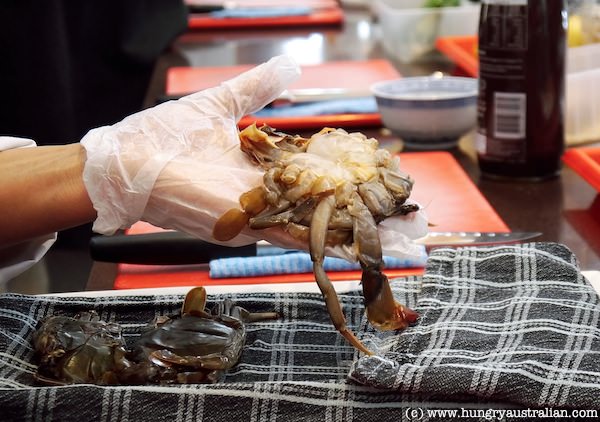
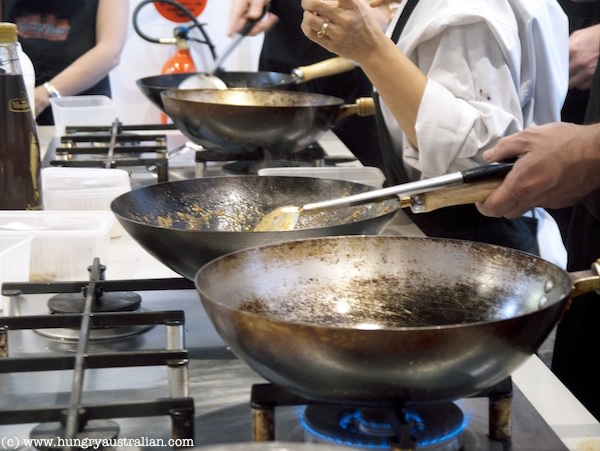
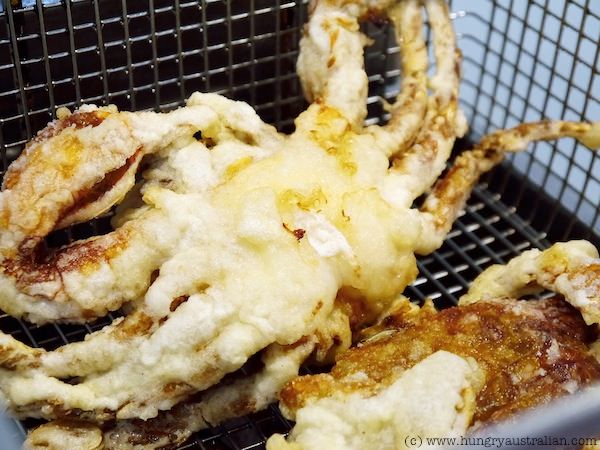
And here is the finished dish. It does look very impressive.
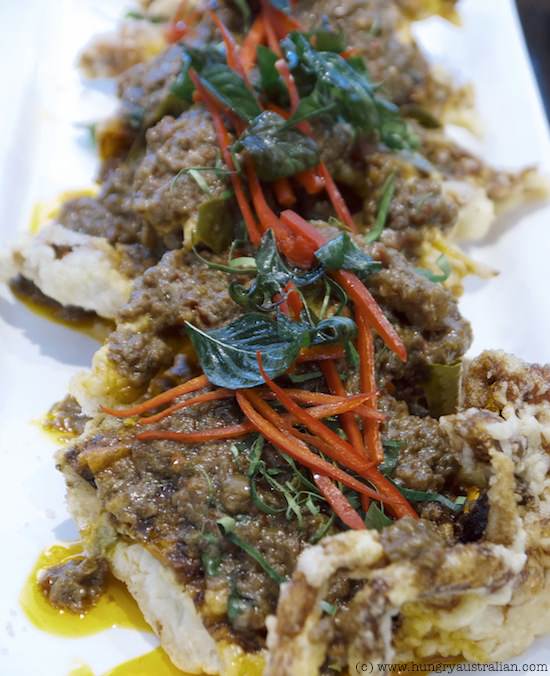
The flavour of the sauce was fantastic but unfortunately the crabs were only just warm by the time we sat down to eat. Deep-fried seafood dishes (like my favourite Salt & Pepper Squid) must be served immediately to be enjoyed at their best. Even a short wait compromises the dish as the crispy batter starts to soften and the oil starts to solidify. But if you were cooking this dish at home you could serve this dish immediately, and enjoy the crabs at their hottest and crispiest.
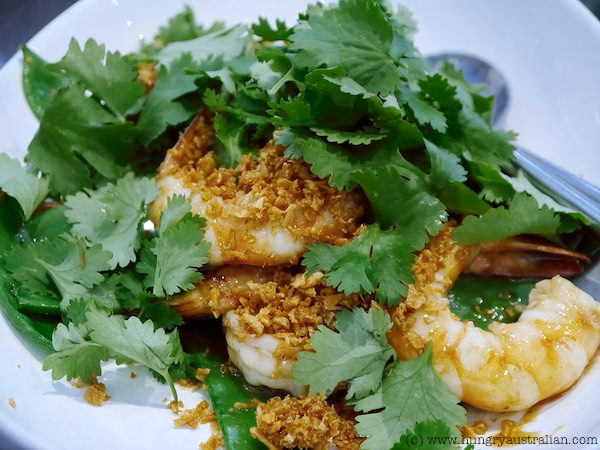
The next dish, Stir-Fried Prawns with Crispy Garlic and Pepper, was delicious and actually quite similar in taste to a poached chicken with crispy garlic and onions dish that my dad makes. The cooking techniques used for both dishes are completely different but the flavours of oyster sauce and fried garlic dominate in both. Crispy garlic is sensational – if you’ve never tried deep-frying garlic at home then you should start now.
The last dish, the squid salad, was my hands-down favourite. Gently poached squid was combined with shallots, galangal, lemongrass, kaffir lime leaves, mint and coriander and dressed with a zesty Nam Jim dressing of fish sauce, lime juice, chillies and garlic. I’ve cooked similar seafood salads at home but never thought to add galangal, which added a lovely gingerish flavour. The squid was not quite as tender as it could have been – Chef Yukiko told us that we should marinate squid in pineapple juice for half an hour before cooking to tenderise – but otherwise this dish was sublime.
Other useful tips:
- When poaching seafood, boil water and then turn down to a simmer to cook your seafood. Never put seafood into boiling water as it will toughen.
- Seafood needs only a couple of minutes to cook so watch it like a hawk. Once you take it out of the boiling water put it in a bowl and pour iced or chilled water onto it to stop the cooking process.
- To cut squid into attractive shapes, place your knife on the squid and then tilt it at a 30 degree angle angle. Slice deeply through the squid, without cutting right through to the other side to create an attractive diamond pattern. Then cut the squid into small diamond shapes. These will curl up when the squid cooks.
Over the food and wine, I’ve learned quite a bit about my classmates. We’ve chatted about our past and upcoming holidays, our families, our work and what we cook at home. About fabulous meals. About where to get the best food in SA.
I love that about food – it creates all kinds of interesting conversations.
Christina Soong-Kroeger attended the Sticky Rice Cooking School as a guest of the school.
Stirling. S.A. 5152
Tel: (08) 8339 1314 or book classes online
Email: admin@stickyricecookingschool.com.au




